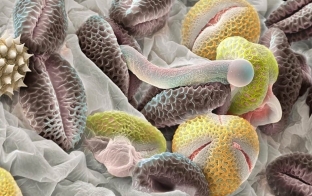Human skin – this is the main protective barrier of the body, protecting internal organs and structures from the aggressive effects of various environmental factors. Chemical and physical agents, various microorganisms, even the components of the food we eat and the air we breathe, can cause tremendous harm to the body. In order to protect himself, he is forced to react to exposure, and such a reaction is often allergic, and its manifestations occur primarily on the skin. Today, estet-portal.com talks about the main causes and mechanisms for the development of allergic dermatoses.
Allergodermatoses: main causes and mechanisms of development
Allergodermatoses – this is a group of diseases of an allergic nature, which are manifested by various lesions of the skin.
This problem is familiar to a fairly large number of people: according to world medical statistics, about 20% of the world's population suffers from various forms of allergic dermatoses.
The problem is also very relevant because it occurs in patients of absolutely different ages, has a tendency to relapse, and is also quite often accompanied by additional, often severe allergy symptoms. In order to effectively treat allergic dermatoses, each specialist must have a good understanding of the pathogenesis of the disease.
Allergodermatoses:
- etiology of allergic dermatoses: the main causes of the development of pathology;
- important mechanisms of body sensitization in allergic dermatoses;
- pathogenesis of allergic dermatosis: what happens after the introduction of the allergen.
Etiology of allergic dermatoses: the main causes of the development of pathology
The main cause of all allergic dermatoses is a single or regularly repeated contact of the human body with an allergen. However, an important point is that the body must be previously sensitized to this allergen, that is, contact with the allergen must be repeated for the appearance of clinical symptoms. Microbial agents, drugs and various chemical compounds, antigens of plants, fungi and animals can act as sensitizers. An important role for the occurrence of allergic reaction is also played by predisposing factors, which include:
- genetic predisposition of the organism;
- presence of other allergic diseases - atopy;
- chronic intestinal pathologies;
- high level of environmental pollution;
- constant contact with animals;
- consumption of artificial foods, and so on.

Important mechanisms of body sensitization in allergic dermatoses
Sensitization of the body in allergic dermatoses can occur through two main mechanisms:
- absorption by macrophages of antigens that have entered the body, followed by activation and antigen-dependent proliferation of T-lymphocytes, which serve as carriers of immune "memory";
- production of specific antibodies, with a particularly important role played by circulating immunoglobulins E, the production of which is quite often genetically determined, and indicates atopy.
After the human body comes into contact with an allergen for the first time, a normally functioning immune system retains information about it for some time. This is called sensitization, and is not accompanied by any clinical symptoms. The characteristic manifestations of allergic dermatosis occur only when the body is in contact with the allergen already repeatedly, while it is the dermis that is the main target.
Pathogeny of allergic dermatosis: what happens after the introduction of the allergen
The pathogenesis of allergic dermatoses depends on the mechanism of sensitization of the organism. It begins with the re-entry of the allergen into the human body. If we are talking about the absorption of allergens by macrophages, sensitized T-lymphocytes are instantly sent to the site of its introduction, which secrete lymphokines – active substances necessary to attract other classes of lymphocytes, polymorphonuclear leukocytes and macrophages. Thus, in a nap, a focus of inflammation is formed, and a characteristic clinical picture unfolds. In atopy, the pathogenetic mechanisms are different. The body not only circulates a large amount of Ig E, but there is also a decrease in the activity and number of T-suppressors. These disorders are supported by autonomic imbalance, which activates the production of new Ig E. These antibodies bind to macrophages,
It is very important for dermatologists to correctly understand the pathogenetic mechanisms of the development of allergic dermatoses in order to properly treat these pathologies.The deep knowledge of the doctor gives him the opportunity to help his patient as effectively as possible. Estet-portal.com thanks you for your attention.
See also:
"Allergic dermatitis: a time bomb".







Add a comment